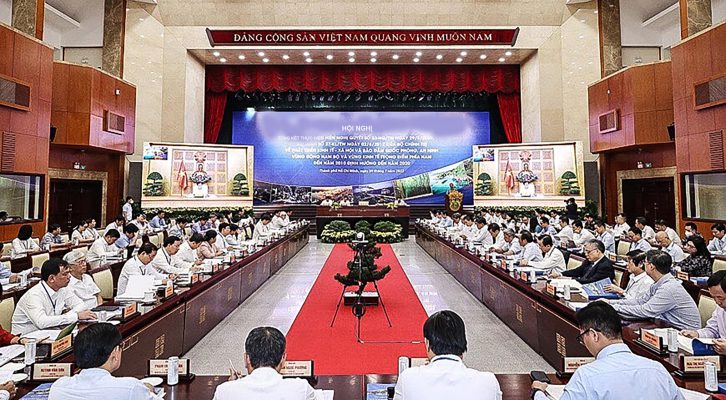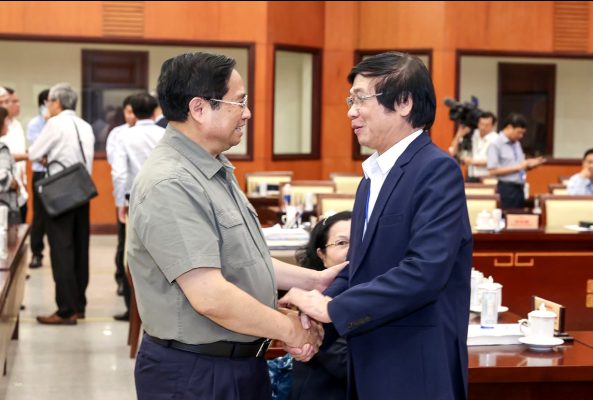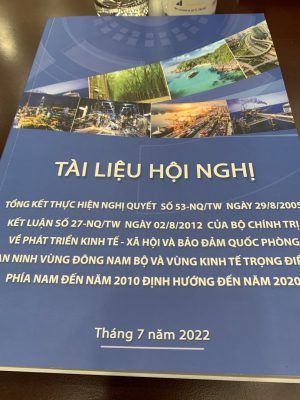On the morning of July 9, the meeting summed up 15 implementation of Resolution 53/NQ-TW dated July 29, 2005 and Conclusion 27/NQ-TW dated August 2, 2012 on the development of the Southeast region and the Southern Economic Region. The southern focus took place in Ho Chi Minh City. HCM. The conference was chaired by Politburo member and Prime Minister Pham Minh Chinh.

The conference was held in the form of face-to-face and online, which attracted the participation of many scientists and managers… Photo source internet
The conference was attended by Politburo members who are Minister of National Defense General Phan Van Giang and Secretary of the City Party Committee. Ho Chi Minh City Nguyen Van Nen. Attending the Conference were Secretary of the Party Central Committee, Deputy Prime Minister Le Minh Khai; Ministers, leaders of central ministries and branches, leaders of provinces and cities in the Southeast region and the Southern key economic region. Minister of Construction Nguyen Thanh Nghi participated and spoke at the Conference.

Prime Minister Pham Minh Chinh (left) talks with the architect. Tran Ngoc Chinh – Chairman of Vietnam Urban Development Planning Association. Photo: Duong Giang/VNA
Chairman of the Vietnam Urban Development Planning Association Tran Ngoc Chinh was invited to attend the conference and gave a speech on Urban Development Orientation in the Southeast region to 2030, with a vision to 2045.
The conference is a particularly important event in evaluating the results of implementing Resolution 53 and Conclusion 27 in the past 15 years and determining the development path of the Southeast region and the Southern key economic region in the future. upcoming period.
The speech of the Association’s President Tran Ngoc Chinh deeply analyzed the current status of the urban system in the Southeast region and the Southern key economic region, including the current status of population, population distribution, urban areas, and urban areas. urbanization and migration; Assessment of the current status of urban system distribution and urban spatial morphology and properties; forecast the development model and spatial structure of the Southeast region and the Southern key economic region…

In the orientation section, the article has clearly defined the strategic goals of developing a regional urban system with key growth poles. Accordingly, the urban system will develop along regional economic corridors. It is forecasted that the rate of urbanization by 2030 will reach about 70%, with 1 city of special grade, 4 urban centers of grade I; 8 urban centers of grade II; 17 grade-III cities, and 32 grade-IV cities.
City. Ho Chi Minh City is the central core city of the region. The central urban area in the future will develop to the North and Northeast. Urban systems in green corridors develop in a decentralized centralized model, focusing on providing urban infrastructure and public services, in order to reduce the load on the central area and balance the region. It is also the secondary growth pole in the sub-regions.
Orientation to develop the form of rural residential space in the direction suitable to natural conditions, traditional culture, production conditions and new rural construction model. Identifying the influencing factors, opportunities and challenges, clarifying the differentiating potential and competitive advantages of the region, in order to propose breakthrough solutions. This will promote the success of the Resolution in the next stages.
The conference was held in the form of face-to-face and online, attracting a large number of scientists, experts from research institutes and universities/.
Tran Thi Thanh Y



